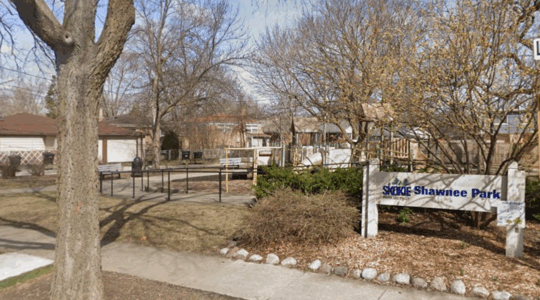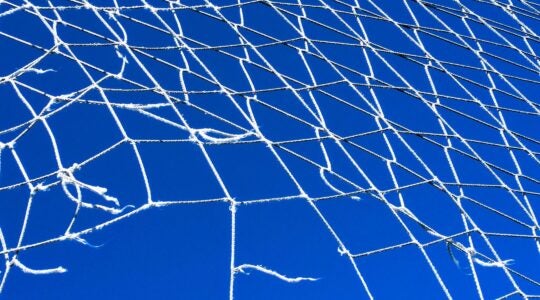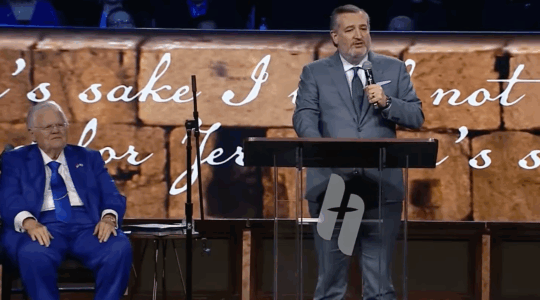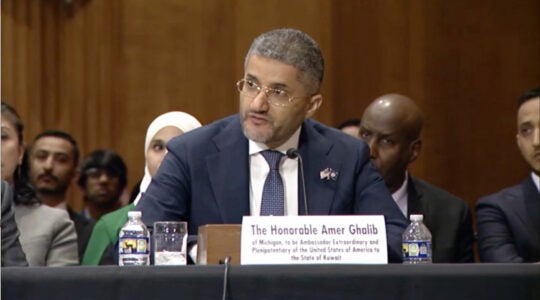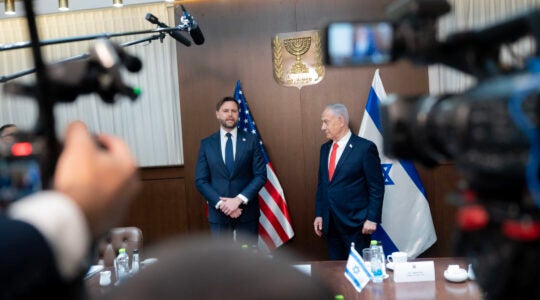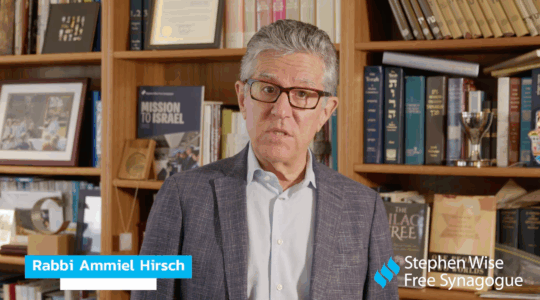NIR ETZION, Israel (JTA) – Perched high in the forested hills overlooking the Mediterranean, a group of U.S. rabbis and Jewish leaders hunker down to brainstorm a riddle harder to solve than might seem: how to make Israel meaningful to their congregants.
A group from a Reform synagogue in St. Louis muses about solutions: hanging signs in their synagogue in Hebrew and English, organizing a birthright-style tour for the shul’s religious school teachers, hosting youth retreats with Israeli teenagers as guests and using Jerusalem stone in a planned renovation of their synagogue, Temple Israel.
On the question of bringing Israel and its politics into more sermons, Rabbi Amy Alper Feder asks her colleagues, “Does knowing your rabbi cares about Israel make you care about Israel more?”
Israel, with its contrasting images of pastoral Jewish homeland and political quagmire, has become an increasingly tough sell with young American Jews. Studies show U.S. Jews feel less connected to Israel than in previous generations.
At a recent five-day seminar in Israel, 95 synagogue leaders from 10 North American cities gathered to see how engaging with Israel might enrich their Jewish lives back home.
Lance Simon, chairman of the youth group at Adat Shalom, a Reconstructionist synagogue in Bethesda, Md., says he works with teenagers who are completely detached from Israel.
“It’s so easy to be Jewish and ignore Israel,” he said.
Explaining why some American Jews choose to ignore Israel, Simon said, “As Americans, we have a ‘fix it already’ approach'” to the Israeli-Palestinian conflict.“But some things are not so easy to fix, and this makes it a challenge to engage because Israel can feel foreign and painful.”
The seminar on Israel was sponsored by the Makom Institute, whose mission is to provide content and training to reimagine Israel’s place in Jewish life. Makom is co-sponsored by The Jewish Agency for Israel and North American Jewish community federations.
The recent seminar covered a range of topics, from exploring ways to bring Israeli culture into synagogues, including music, film and literature, to how encounters between Diaspora Jews and Israelis can shape Jewish identity for individuals in both groups.
That mission is a special challenge in North American communities, said Makom’s executive director, Yonatan Ariel, because North American Jews tend to define their Jewishness more as a religion than as a sense of belonging to a people.
This, he said, is one of the many reasons it makes it “harder to see what common cause you have with the people in Israel.”
At one of the workshops intended to bridge the Diaspora-Israel gap, the participants learned about incorporating Israeli music into North American Jewish prayer.
Rabbi David Lazar, the rabbi of a Conservative synagogue in Ramat Aviv, Kehillat Tiferet Shalom, introduced participants to songs like “Yarda Ha’Shabbat,” which describes Shabbat descending over the Galilee, and “Ana B’Koach,” a kabbalistic poem that recently was set to music that became a hit on Israeli radio.
Participants talked about the challenges of culture and identity getting lost in translation.
“The vast majority of Americans don’t know any Israeli music,” said one rabbi.
Another spoke of leading a teen trip to Israel where the young Americans sang the blessing after meals to the tune of Israel’s national anthem. The young Israelis accompanying the trip had only one association for the tune and found its use during the prayer bewildering.
Another workshop examined the role of the Prayer for the State of Israel and how experimenting with different versions might help congregations think about their connection with the Jewish state.
Leading the session was Israeli Reform Rabbi Ofer Sabath Beit Halachmi, who wrote a new version of the prayer. Its decidedly current bent has sections such as: “Give wisdom and understanding to our elders and ministers. Distance from them any dishonorable deed. Lead them in the path of the just and the good, for we have put our lives in their hands.”
Beit Halachmi suggested that congregations might stand and face Israel when they pray for its welfare, prompting a conversation on how ritual can focus the consciousness of a community toward Israel.
The conference also highlighted how Israeli Jews often forge a new connection to their Jewishness after spending time with Jews in the Diaspora.
In the Diaspora they see different ways of practicing Judaism, often for the first time. Many are struck by their encounters with egalitarian Judaism, seeing men and women sitting together during synagogue prayers, women donning tallitot and girls called to the Torah as part of their bat mitzvah.
Simon, who said “Jews outside of Israel need to understand the real Israel,” added, “I did not realize how much we would be learning, how much Israelis need us to help connect with Judaism in a modern, beautiful way.”
JTA has documented Jewish history in real-time for over a century. Keep our journalism strong by joining us in supporting independent, award-winning reporting.
